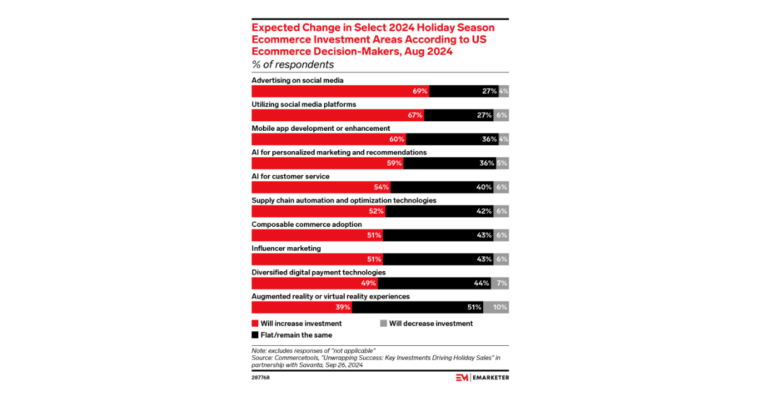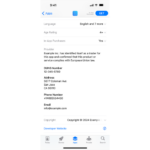As the 2024 holiday season approaches, ecommerce decision-makers in the US are ramping up their investments in social media platforms to tap into growing consumer engagement. According to a recent study by Commercetools, revealed by eMarketer, 69% of US ecommerce executives are planning to increase their spending on social media advertising, reflecting the increasing influence of these platforms on purchasing behavior.
In addition to boosting advertising budgets, 67% of these leaders are also enhancing their overall use of social media, integrating platforms like Instagram, TikTok, and Facebook more deeply into their ecommerce strategies.
This shift comes as retailers recognize the evolving shopping habits of consumers, many of whom now rely on social media for product discovery and purchasing decisions. Social platforms are no longer just a place for brand awareness—they are increasingly becoming direct channels for sales, particularly through features like shoppable posts, live-stream shopping, and influencer collaborations. Ecommerce companies are eager to meet customers where they spend the most time, and the holiday season provides the perfect opportunity to capitalize on these trends.
The anticipated spike in social media investment comes against the backdrop of significant growth in retail spending on social platforms. US retailers are expected to spend $25.91 billion on social media advertising in 2024, marking a 14.2% increase year-over-year, according to forecasts. This growth is driven by the realization that social networks provide not just an avenue for brand visibility, but also a measurable return on investment (ROI) in terms of direct sales conversions. Many consumers use social media to research products, read reviews, and click through to make purchases, particularly during high-traffic periods like Black Friday and the December holiday rush.
For ecommerce decision-makers, the focus on social media is more than just about visibility—it’s about driving meaningful engagement that converts into sales. Features like targeted ads, influencer campaigns, and user-generated content allow brands to create personalized shopping experiences, fostering stronger connections with consumers. This targeted approach is crucial during the competitive holiday season when consumers are bombarded with offers from countless retailers.
A large portion of this increased social media investment is geared toward mobile users, who are expected to account for the majority of online holiday sales. Mobile commerce, or m-commerce, continues to rise in prominence, with forecasts suggesting that 52.7% of total holiday retail ecommerce sales will take place on mobile devices in 2024. This shift reflects a broader trend of consumers turning to their smartphones to shop, whether through apps, mobile-optimized websites, or social media platforms.
With mobile devices playing a central role in shopping behavior, social media’s integration with m-commerce has become vital. Shoppable posts, where consumers can purchase products directly within the social media app without being redirected to an external site, are gaining traction. Additionally, features like Instagram Checkout and TikTok Shop are allowing retailers to streamline the customer journey, making it easier for consumers to buy with just a few taps.







Comments
Loading…